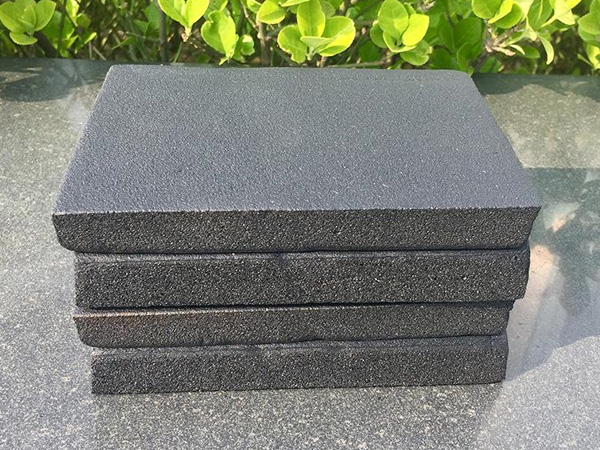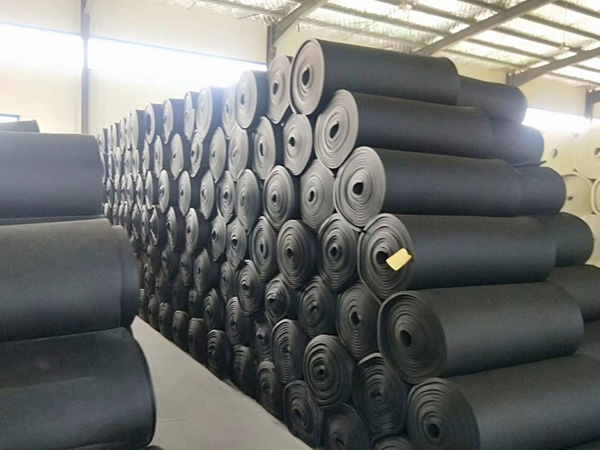Top 7 Practical Uses of Sound Insulation Cotton in Modern Architecture
2025-11-15 15:46:20
Noise pollution has quietly become one of the biggest challenges in modern urban life. From apartment complexes to commercial towers, controlling unwanted sound is now a core part of building design. Among the wide variety of acoustic materials available, sound insulation cotton stands out for its affordability, performance, and sustainability.
As a dedicated sound insulation cotton manufacturer, we combine strong production capabilities and bulk supply services to deliver tailored acoustic solutions for different construction needs. Below are the seven most common applications of sound insulation cotton in modern architecture.


1. Partition Wall Acoustic Enhancement
One of the most effective ways to improve room-to-room privacy is by using sound insulation cotton inside wall cavities. The fibrous material absorbs airborne sound waves, preventing speech and noise from traveling between spaces.
Whether it’s an apartment, hospital, school, or office, the use of sound insulation cotton between gypsum boards helps create a quieter, more private environment while maintaining structural efficiency.
2. Ceiling Sound Absorption Systems
In multi-story buildings, ceilings often act as major noise transmitters. Installing sound insulation cotton above suspended ceilings or between joists helps absorb sound from footsteps, moving furniture, or HVAC systems.
This application is particularly beneficial for educational facilities, libraries, and corporate offices, where maintaining acoustic comfort contributes to concentration and well-being.
3. Floor Impact Noise Reduction
Floors carry both impact and structural vibration noise. Incorporating sound insulation cotton into floor layers — usually between subfloors and concrete slabs — can greatly reduce this transmission.
In residential towers or commercial buildings, this setup provides a balanced combination of soundproofing, fire resistance, and heat insulation, ensuring comfort without sacrificing space or aesthetics.
4. HVAC Ductwork and Mechanical Noise Control
Ventilation systems often become unexpected sound channels. Wrapping ducts or lining air plenums with sound insulation cotton effectively dampens vibration, airflow noise, and mechanical hum.
Besides its acoustic benefits, this material also offers thermal insulation, preventing condensation on cold ducts and contributing to overall HVAC efficiency — a dual advantage for engineers and contractors alike.
5. Theaters and Auditoriums
Performance halls, cinemas, and auditoriums rely heavily on acoustic precision. Sound insulation cotton placed behind perforated panels or wall linings helps control reverberation and echo, ensuring crisp and balanced sound quality.
Its ability to absorb a broad frequency range makes it a staple for professional acoustic design projects, enhancing clarity for both spoken word and live music.
6. Industrial and Machinery Enclosures
In industrial settings, sound insulation cotton is used to construct quiet zones around noisy equipment such as compressors, turbines, and generators. It reduces the decibel level within workspaces, improving occupational safety and comfort.
Thanks to its non-combustible nature and temperature resistance, it remains stable under challenging conditions — an essential feature for industrial manufacturers and engineering contractors.


7. Exterior Wall and Building Facades
Urban environments generate high external noise from vehicles, trains, and industrial activity. Integrating sound insulation cotton within external wall layers enhances façade sound resistance while maintaining excellent thermal balance.
This technique is ideal for energy-efficient architecture, providing both comfort and sustainability. When combined with weatherproof membranes, it forms a complete barrier against noise, heat, and moisture.
Core Benefits of Sound Insulation Cotton
·High sound absorption efficiency, especially in the mid- to high-frequency range
·Lightweight and flexible, allowing for easy cutting and installation
·Fireproof and eco-friendly, meeting global green building standards
·Compatible with wall, ceiling, floor, and HVAC applications
·Long service life with stable acoustic performance
Its versatility makes sound insulation cotton one of the most practical and cost-effective materials for modern soundproofing design.
Why Choose a Certified Manufacturer
Working directly with a reputable sound insulation cotton manufacturer ensures consistent quality, technical reliability, and timely supply.
Our company, supported by advanced production equipment and bulk supply capacity, guarantees stable output, certified performance, and tailored design support for projects of any scale.
By maintaining strict material testing, we ensure our products meet international standards for acoustic performance, fire safety, and environmental compliance.
Conclusion
From walls and ceilings to HVAC systems and industrial machines, sound insulation cotton plays a key role in creating quieter, healthier, and more efficient spaces.
Choosing an experienced manufacturer with solid production and bulk delivery capacity ensures your projects benefit from consistent acoustic results and cost efficiency.
As urban environments continue to grow denser and noisier, sound insulation cotton remains a reliable, sustainable, and high-performance solution for modern construction projects that demand both comfort and efficiency.
References
GB/T 7714:Yang T, Hu L, Xiong X, et al. Sound absorption properties of natural fibers: A review[J]. Sustainability, 2020, 12(20): 8477.
MLA:Yang, Tao, et al. "Sound absorption properties of natural fibers: A review." Sustainability 12.20 (2020): 8477.
APA:Yang, T., Hu, L., Xiong, X., Petrů, M., Noman, M. T., Mishra, R., & Militký, J. (2020). Sound absorption properties of natural fibers: A review. Sustainability, 12(20), 8477.

OurFlame Retardant Rubber Foamis a premium closed-cell elastomeric insulation material engi...

OurRubber Pipe Insulationis a high-performance solution designed specifically for HVAC pipi...

Rubber Foam Insulation Sheet – Product Introduction Premium Flexible Insulation for Therm...

Specially engineered for refrigeration applications, ourElastomeric Rubber Insulationprovid...



